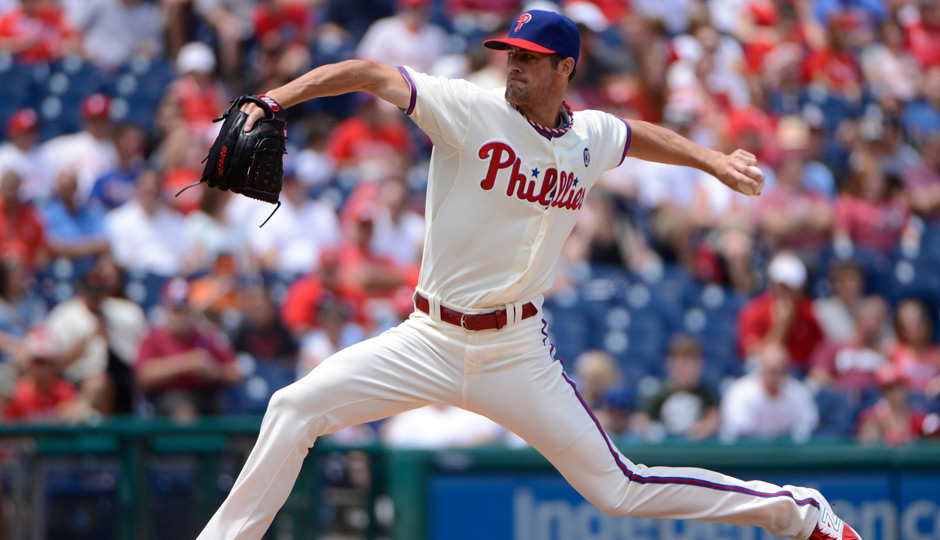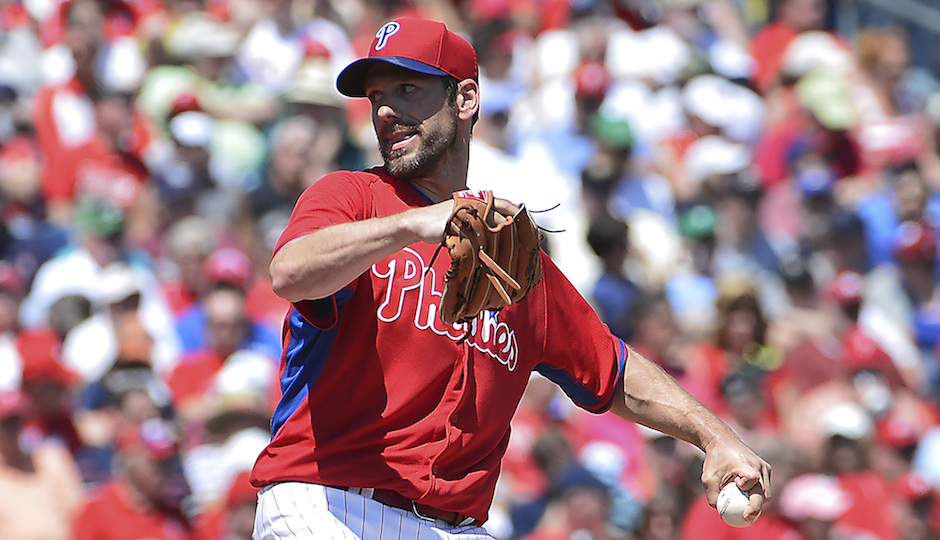How to Fix the Philadelphia Phillies
It doesn’t really seem that long ago. It was, though. I was 23 in 2006. Ryan Howard was three years older. And when I went to that game at Citizens Bank Park, Howard did something I’d never seen in person before: He hit three home runs in a game.
And they were off Tim Hudson, too! Though he was having a bad 2006, Hudson was a star in Oakland previously and had already beaten the Phillies twice that season. Howard hit his 50th, 51st, and 52nd homers of the season off Hudson that day with relative ease. As he stood on the dugout steps after Howard’s third homer, Jimmy Rollins shook his head at the scene. He couldn’t believe it. Up in the 400 level, my friends and I did the same. We were Phillies fans, and this new guy — who was just in his first full year in the majors, having played only 88 games in his Rookie of the Year season in 2005 — looked like he was going to win MVP.
He did. The Phillies made the playoffs the next year, and started a five-season run that was the best in the franchise’s history. The Phillies were baseball’s new powerhouse: Five division titles, two pennants and a World Series win. Howard never had a year like his 2006 MVP season, but he followed that 58-homer season with years of 48, 47 and 45 home runs. In six seasons from 2006 to 2011, Howard gave the Phillies six good-to-great seasons of offensive production. He put up great numbers in the 2008 World Series and was MVP of the 2009 NLCS. He had inflated counting stats thanks to the Phillies’ potent offense and was a mess defensively, but he was a star.
He tore his Achilles coming out of the box in the final at-bat of the Phillies’ disappointing 1-0 loss in Game 5 of the 2011 NLDS. He was never the same player again, though some said he was figured out in the 2009 World Series against the Yankees. A lot of the other stars of the 2007 to 2011 Phillies had sharp declines along with Howard, but Howard’s decline has been the linchpin, at least in terms of amount of coverage it’s received.
Last Wednesday, the Phillies benched Howard against a tough lefthander. It seemed like a platoon with Darin Ruf was coming, but then came reports the Phillies were looking to trade Howard and willing to pay most of his $60 million contract to do so. Other reports had them ready to release him outright, though general manager Ruben Amaro said the team wasn’t considering cutting him. Amaro said Howard will stay with the club and be a productive player again, but Howard sat again Friday night. Three seasons after losing just 60 games and finishing with the best record in the team’s history, the Phillies are 44-58. Howard’s benching is just the first domino.

Phillies starting pitcher Cole Hamels. Photo | Eileen Blass-USA TODAY Sports
There’s something sad about this. The first piece to fall makes it even more depressing than the Phillies being bad. In 2001, my friends and I went to the Vet to cheer Jimmy Rollins. We brought a big “Rookie of the Year” banner. He wasn’t a legit candidate — Albert Pujols was the unanimous winner that season — but it was fun to believe. I was a teenager. I remember Chase Utley’s first homer (a grand slam at the Vet) and Cole Hamels’s first start (5 innings, 1 hit, no runs, a no decision). I remember when Ryan Howard hit three home runs. I spent my twenties following these guys. The only other major Philadelphia sports title in my life happened when I was four months old.
And I was in my twenties! Who cares about me. “There are kids who are 17 years old who spent most of their childhoods rooting for Jimmy Rollins,” Johnny Goodtimes said to me at a coffee shop the other day (this is Philadelphia, where you have friends with names like “Johnny Goodtimes”). It’s sad. When the Sixers began trading assets to clean house last year, it was depressing — you know they’ll be bad for a while — but not as bad as this. The team hadn’t had much success since trading Allen Iverson in 2006, and the team’s traded star (Jrue Holiday) had only been here since 2009.
It’s tempting to think the only way to fix the Phillies is to fire everything into the sun. There does not appear to be much hope in the short term. The player replacing Howard in the starting lineup, Ruf, has worse numbers in the minors this year than Howard does in the majors. The natural state of the Philadelphia Phillies is bad. The terrible teams of the ’30s and ’40s have nothing to do with the team of today. But since the Bill Giles-led partnership bought the Phillies in 1981, the team is 2672-2656. They’re barely over .500. There was a 1983 pennant with players mostly from the 1970s, a fluky 1993 pennant and the late 2000s run. It has not been pretty otherwise.
Still, the Phillies ought to rebuild, acquire assets that will give them the chance to get back to being one of the best teams in baseball again. It’s possible! The Phillies farm system isn’t empty, but it’s not stocked with highly rated prospects. Unfortunately, it seems like the older position players wouldn’t give the Phillies much in return. No one’s going to give up a prospect for Ryan Howard. Probably not for Jimmy, either. Chase Utley has an OPS of just .717 since May 1. Maybe Utley could still get some return, but he and Howard have a 21-team no-trade clause.

Which leaves the pitching. It’s less talked about as the Phillies decline because — besides the retirements of Roy Oswalt and Roy Halladay — the current remaining aces are doing OK. (Even Cliff Lee, just back from injury and not looking great, has a 3.78 ERA this year.) And, if the Phillies are going to get prospects back who can help the team, they’re going to have to trade Cole Hamels and Cliff Lee. This is hard. Hamels has pitched nine seasons for the Phillies and six of them have been fantastic. He looks incredible right now. Lee is older, and is just coming off injury, but he has value too. Contenders are always looking to add a pitcher. Several times in recent years, that hired gun pitcher has been Cliff Lee. (Both players also have partial no trade clauses.)
Lee hasn’t looked that sharp since coming off injury, but there’s an advantage here: The Phillies don’t need to do anything before the trade deadline. They can wait until the offseason. And they should — they don’t need to ship anyone out of here just to make a trade. Waiting until the offseason may be the best move. But sooner or later, the Phillies are going to have to move on from their core. The best way to do it is to trade their top pitching, and hope they get some more down the line.
Follow @dhm on Twitter.


